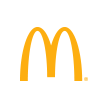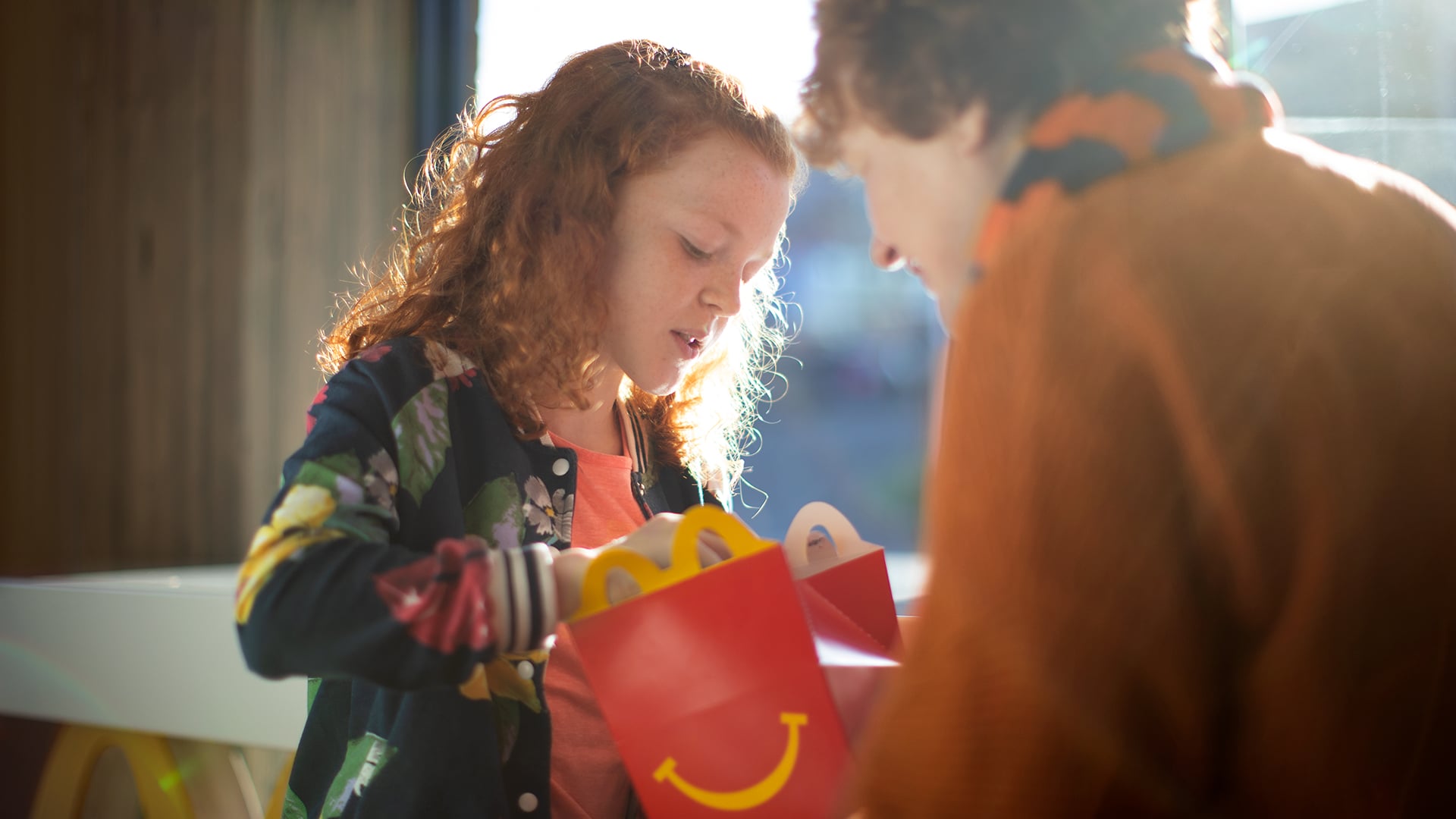Goal Performance & Reporting
We are committed to measuring and communicating impact across our priority environmental and social issues in line with best practice guidance, from establishing policies with global reach to tailoring key performance indicators (KPIs) to account for market-level differences.
Throughout our Purpose & Impact website, we disclose our foundational approach to the issues that are most important to our business, and that will help create long-term sustainable value. Across many areas, we have announced, and may from time to time announce, certain Purpose & Impact-related initiatives, goals, targets or other objectives. Such statements reflect current plans, are not a guarantee that they will be achieved and are subject to change. As with all journeys to advance change and meet goals, there are challenges along the way. McDonald’s has a complex global supply chain and many stakeholders that have varied interests. Our ability to achieve progress is subject to numerous factors and conditions, many of which are outside of our control. Changes in circumstances, regulatory standards and methods of measuring achievement may impact progress, which may not be linear. Please refer to each of our Impact Area pages to learn more about the many ways we are working to fulfill our purpose – to feed and foster community.
Latest Reporting Resources
- 2024–2025 Purpose & Impact Report (PDF – 6 MB)
- 2024–2025 SASB Index (PDF – 384 KB)
- 2024–2025 Purpose & Impact Progress Summary (PDF – 4.5 MB)
- Climate Resiliency Summary (PDF – 1.3 MB)
Jump to our past performance reports listed below.
Reporting Scope
The Purpose & Impact section of our website provides an overview of our impact approach across our four Impact Areas. For our recent progress and actions that took place in 2024, please see our latest Purpose & Impact Report (listed above) or see below for our most recent progress against our commitments.
Unless otherwise stated, information and data across the Purpose & Impact pages cover McDonald’s Corporation and its majority-owned subsidiaries worldwide during fiscal year 2024 (January 1 to December 31). For more information on the Company’s structure, please see the Company’s Annual Report on our Investor Relations web page.
Company employees and Company-owned and operated restaurants are in our direct sphere of control. Therefore, unless otherwise stated, information and data across the Purpose & Impact pages do not cover Franchisees, who may independently choose to implement or report on their own impact initiatives. Our Franchisees and suppliers are independent business owners who make decisions for their own organizations while maintaining core standards for our brand. Through self-managed excellence, suppliers are encouraged to identify and manage key environmental and social risks and opportunities within their own companies.
For certain information and data across the Purpose & Impact pages, we rely on information provided by third parties, including Franchisees and suppliers. In these cases, we have relied on these third parties for accuracy and completeness.
Statements contained in these pages about future developments and past occurrences are based on information and assumptions available as of the date of publication. The Company holds no obligation to update information or statements.
Key Definitions
Unless specified otherwise, the following definitions apply throughout the Purpose & Impact section of our website and the Purpose & Impact Report:
- McDonald’s: Our global brand, unless specified otherwise.
- We/Our/The Company: McDonald’s Corporation and its majority-owned subsidiaries worldwide.
- The System: The Company, its Franchisees and suppliers are collectively referred to as the “System” – also known as McDonald’s “three-legged stool.”
- Franchisees: The collective group of independent individuals and entities owning and operating McDonald’s restaurants under one of the following structures – conventional franchise, developmental license or affiliate. For more information on the Company’s structure and scope, see our latest Annual Report.
- McDonald’s restaurants/Restaurants: Includes restaurants owned by the Company and its Franchisees.
- Company employees: Includes those in our corporate and other offices, as well as in Company-owned and operated restaurants.
A Summary of Progress on Our Goals
Below is a summary of our progress against the global goals we’ve set publicly across our Impact Areas. Select goals specific to our U.S. business are also included due to stakeholder interest.
The progress statements are in summary form. For more information on each goal statement, including definitions, scope and exclusions, please follow the accompanying links to our web page for each issue or refer to our latest Purpose & Impact Report (PDF – 6 MB).
Animal Health & Welfare and Responsible Antibiotic Use
For more information on each of the following goals, check out our Animal Health & Welfare and Responsible Antibiotic Use pages.
Broiler Welfare Goal (Multiple Markets)
We are committed to sourcing chickens raised with improved welfare outcomes. To achieve this, we have outlined eight specific commitments for our in-scope markets, which are expected to be fully implemented by the end of 2024.1
Progress
As of the end of 2024, we have achieved our eight Broiler Welfare Commitments across in-scope markets.
Responsible Antibiotic Use in Chicken Supply Chain Goal (Multiple Markets)
Eliminate the use of antibiotics defined by the World Health Organization (WHO) as Highest Priority Critically Important Antibiotics (HPCIAs) to human medicine from all chicken served in in-scope markets by the end of 2027.2
Progress
Across in-scope markets, HPCIA use has been eliminated in Australia, Brazil, Canada, Europe, Japan, South Korea and the U.S., with China expected to comply before the end of 2027.
Responsible Antibiotic Use in Beef Supply Chain Goal (Multiple Markets)
In collaboration with our suppliers, producers and farmer partners, we will establish market-appropriate targets for use of medically important antibiotics – as defined by the WHO – in our beef supply chain, and we will partner in the collection of antibiotic use data and measurement of progress on responsible use associated with the beef industry globally.
Progress
In December 2022, we established market-specific targets for the responsible use of antibiotics in our beef supply chain for 10 in-scope markets (representing over 80% of our global beef supply chain as of the end of 2022).3
We continue to grow our partnerships to increase data availability, access and collection to help us better understand antibiotic use and identify opportunities for improvement.
Pork Housing Goal (U.S.)
We’re working with pork suppliers to phase out the use of gestation stalls (small, enclosed pens) for housing pregnant sows by the end of 2024.
Progress
Achieved as of the end of 2024. We’ve phased out the use of gestation stalls for confirmed pregnant sows in McDonald’s U.S. pork supply.
Climate Action
For more information on our 2050 Net Zero Climate Target, check out our Climate Action page.
2050 Net Zero Target (Multiple Markets)
Reduce absolute Scope 1 and 2 greenhouse gas (GHG) emissions by 50.4% from Company-owned and operated restaurants and offices, by the end of 2030, from a 2018 base year.
Reduce absolute Scope 3 energy and industrial GHG emissions by 50.4% from Franchisee and Company-owned and operated restaurants, and the facility, logistics and plastic packaging emissions in our supply chain, by the end of 2030, from a 2018 base year.
Reduce absolute Scope 3 Forest, Land and Agriculture (FLAG) GHG emissions by 16% and maintain no deforestation across its primary deforestation-linked commodities, by the end of 2030, from a 2018 base year.
Progress
Guided by our climate risk and opportunities insights and driven by our goals, during 2024, we pursued various actions to help reduce emissions – from enhancing how we design and power restaurants to supporting more sustainable agriculture production techniques.
As with all journeys to advance change and meet goals, there are challenges along the way. McDonald’s must work across a complex global supply chain and with many stakeholders that have varied interests. Changes in circumstances, regulatory standards and methods of measuring achievement may impact progress, which may not be linear.
Nature, Forests & Water
For more information on the following goal, check out our Nature, Forests & Water page.
Eliminate Deforestation Goal (Multiple Markets)
Eliminate deforestation from our global supply chains by the end of 2030, building on the progress from our 2020 milestones in highest-priority commodities and regions.
We continue our focus on supporting deforestation-free supply chains for our primary commodities: beef, soy (for chicken feed), palm oil, coffee and fiber (used in primary guest packaging).
Progress
The Company continues to drive resiliency-focused transformation of production systems in its supply chain through its work toward eliminating deforestation and addressing conversion for these primary commodities and origins.
Percentage of Commodities Sourced in 2024 Supporting Deforestation-Free Supply Chains:
- Beef: 77% of beef sourced from high-priority origins in Argentina, Australia, Brazil and Paraguay, per the McDonald’s Deforestation-Free Beef Procurement Policy (PDF – 214 KB), was verified to be deforestation-free through geo-monitoring. High-priority origins represented 10% of our global beef volumes in 2024. Details can be found in our Policy.4
- Soy (for chicken feed) 100%: The Company supports the resilient transformation of soy-producing regions by investing in landscape-level solutions and initiatives covering 100% estimated soy volumes in feed for chicken produced outside of the U.S. and Canada.5
- Palm oil 100%: The Company requires palm oil sourced for McDonald’s restaurants or as an ingredient in McDonald’s products to be covered by Roundtable on Sustainable Palm Oil (RSPO) certification.6
- Coffee 96.6%: The Company requires coffee sourced for McDonald’s restaurants from Honduras, Indonesia and Vietnam to be Rainforest Alliance Certified™ and for ground and whole bean coffee from other countries to be sourced from Rainforest Alliance, Fairtrade International certified or from a McCafé Sustainability Improvement Platform (SIP) program.7
- Fiber-based primary guest packaging 98.99%: The Company requires that fiber for primary guest packaging at McDonald’s restaurants be sourced from Forest Stewardship Council® (FSC®) chain of custody certification or the Programme for the Endorsement of Forest Certification (PEFC) for deforestation.8
Packaging, Toys & Waste
For more information on each of the following goals, check out our Packaging, Toys & Waste page.
Progress
Percentage of Primary Guest Packaging Sourced From Renewable, Recycled or Certified Sources by Material
| 2024 | |
|---|---|
Percentage of primary guest packaging from renewable, recycled or certified sources | 90.93% |
| Percentage of primary fiber-based guest packaging sourced from recycled or certified sources | 98.99% |
As of the end of 2024, we were 90.93% of the way toward our goal of sourcing 100% of our primary guest packaging9, 10 from renewable, recycled or certified materials by the end of 2025.
Non-structural components of packaging are out of scope.11
We continue to face challenges in identifying commercially scalable renewable, recycled or certified sources for certain packaging items that meet our and our customers’ expectations, including the linings and lids used for hot items contained in fiber packaging. These challenges will impact our ability to source 100% of our primary guest packaging from renewable, recycled or certified materials by the end of 2025.
Added Fluorinated Compounds Goal (Multiple Markets)
Ensure all primary guest packaging is free from intentionally added fluorinated compounds by the end of 2025.12
Progress
As of the end of 2024, 99.82% of our guest packaging items did not contain intentionally added fluorinated compounds.
Guest Recycling Goal (Multiple Markets)
We aim to implement global and local solutions across our business to advance the reduction, reuse, composting and/or recycling of guest packaging, and help create demand for recycled materials by the end of 2025.
Progress
In 2024, approximately 89.6% of restaurants in markets with advanced infrastructure13 offered guests the opportunity to recycle and/or compost packaging items.
In these restaurants, guest packaging is collected in customer-facing bins for back-of-house or off-site sorting for recycling or composting, utilizing existing local waste infrastructure systems.
Plastic Reduction in Happy Meal® Toys Goal (Multiple Markets)
Drastically reduce plastics in Happy Meal toys around the globe and transition to more sustainable materials by the end of 2025.14
Progress
As of the end of 2024, we reduced virgin fossil fuel-based plastic for Happy Meal toys by 80.26% as compared to a 2018 baseline.
This progress has involved decreasing the use of virgin fossil fuel-based plastics. For example, in 2024 we began using viscose stuffing made from wood pulp, fabric and stuffing made from recycled plastic, and bagasse molded fiber made from sugarcane in Happy Meal toys.
Past Reports
2023 Performance Reporting
2023–2024 Purpose & Impact Report and SASB Index (PDF – 6 MB)
2023–2024 Purpose & Impact Progress Summary (PDF – 8.74 MB)
2022 Performance Reporting
2022–2023 Purpose & Impact Report and SASB Index (PDF – 7 MB)
2022–2023 Purpose & Impact Progress Summary (PDF – 2 MB)
2022–2023 Diversity, Equity & Inclusion Report (PDF – 2.9 MB)
2022 Diversity Snapshot (PDF – 3.5 MB)
McDonald’s Global Happy Meal Goals Final Report on Progress (PDF – 1.8 MB)
2021 Performance Reporting
2021–2022 Purpose & Impact Progress Report (PDF – 5.7 MB)
2021–2022 Purpose & Impact Progress Summary (PDF – 5 MB)
2021 Purpose & Impact Reporting Website Archive (PDF – 4.8 MB)
2021 SASB Index (PDF – 143 KB)
2021–2022 Diversity, Equity & Inclusion Report (PDF – 32 MB)
2021 Diversity Snapshot (PDF – 903 KB)
2021 Climate Risk & Resiliency Summary (PDF – 3.82 MB)
2020 Performance Reporting
2019–2020 Purpose & Impact Summary Report (PDF – 2.7 MB)
2020 Diversity Snapshot (PDF - 342 KB)
2020 SASB Index (PDF – 162 KB)
Earlier Performance Reporting
2020 ESG Reporting Website Archive (PDF – 5 MB)
2019–2020 Purpose & Impact Summary Report (PDF – 2.7 MB)
2019–2020 Progress Highlights (PDF – 869 KB)
2019 ESG Reporting Website Archive (PDF – 7 MB)
2019 SASB Index (PDF – 123 KB)
2018 ESG Reporting Website Archive (PDF – 1.7 MB)
2017 ESG Reporting Website Archive (PDF – 2.2 MB)
2016 ESG Reporting Website Archive (PDF – 2.4 MB)
CDP Responses
2023 CDP Climate Change (PDF – 1 MB)
2023 Water Security (PDF – 245 KB)
2022 CDP Climate Change (PDF – 827 KB)
2022 CDP Forests (PDF – 606 KB)
2021 CDP Climate Change (PDF – 588 KB)
2021 CDP Forests (PDF – 580 KB)
2020 CDP Climate Change (PDF – 552 KB)
2020 CDP Forests (PDF – 521 KB)
2019 CDP Climate Change (PDF – 520 KB)
2019 CDP Forests (PDF – 441 KB)
2018 CDP Climate Change (PDF – 521 KB)
2018 CDP Forests (PDF – 426 KB)
Footnotes
1 Broiler welfare: These commitments apply to chickens raised for sale at McDonald’s restaurants in Australia, Canada, France, Germany, Italy, Ireland, the Netherlands, Poland, South Korea, Spain, Switzerland, the U.K. and the U.S. Russia has been removed from the scope of this goal based on our 2022 exit from this market.
2 Chicken antibiotic use: Markets covered by this goal include Brazil, Canada, Japan, South Korea, the U.S., Australia, China and Europe. For the purposes of this goal, Europe includes Austria, Azerbaijan, Belgium, Bulgaria, Croatia, the Czech Republic, Denmark, Estonia, Finland, France, Georgia, Germany, Greece, Hungary, Ireland, Italy, Latvia, Lithuania, Luxembourg, Malta, Moldova, the Netherlands, Norway, Poland, Portugal, Romania, Serbia, Slovakia, Slovenia, Spain, Switzerland, Sweden, the U.K. and Ukraine. As of December 2023, Belarus, Bosnia & Herzegovina and Kazakhstan have been removed from the scope of this goal based on our exit from those markets.
3 Beef antibiotic use: This goal focuses on Australia, Brazil, Canada, France, Germany, Ireland, New Zealand, Poland, the U.K. and the U.S., which represented our top 10 beef sourcing countries and accounted for over 80% of our global beef supply chain as of the end of 2024.
4 Beef. We continue to refine our calculation methodology, which may create potential inconsistencies with previously reported information. Scope: Includes volume from raw material suppliers (if in priority origins according to the McDonald’s Deforestation Free Beef Procurement Policy) to beef suppliers to the McDonald’s System and all McDonald’s restaurants owned and operated by the Company and its Franchisees that sell beef. In 2024, the McDonald's System sourced 90% of its beef from low-priority origins under the McDonald’s Deforestation-Free Beef Procurement Policy. McDonald’s requires all beef raw material sourced from high-priority origins to adhere to McDonald’s Deforestation-Free Beef Procurement Policy and meet the requirements as outlined in McDonald’s Commitment on Forests and Natural Ecosystems. Countries with origins currently identified as high priority for beef include Argentina, Australia, Brazil and Paraguay. Exclusions: Grain-fed Australian beef and beef used as secondary ingredients in McDonald’s products; for example, as flavoring in a sauce.
5 Soy (for chicken feed). Scope: Includes all estimated soy volume used in the feed of chicken sourced for McDonald’s products by all chicken suppliers to the McDonald’s System and all McDonald’s restaurants owned and operated by the Company and its Franchisees that sell chicken. Landscape-level solutions and initiatives are efforts within and with communities facing potential natural ecosystem conversion risk (including deforestation) and/or human rights-related risk in a defined geographic area to address environmental, social and economic challenges and support more sustainable livelihood. Initiatives are multi-stakeholder and include operationalization of a landscape-focused approach by setting common goals, taking collective action, reconciling different interests, and monitoring progress towards desired resiliency-focused outcomes. Europe refers to Austria, Azerbaijan, Belgium, Bulgaria, Croatia, the Czech Republic, Denmark, Estonia, Finland, France, Georgia, Germany, Greece, Hungary, Ireland, Italy, Latvia, Lithuania, Luxembourg, Malta, Moldova, the Netherlands, Norway, Poland, Portugal, Romania, Serbia, Slovakia, Slovenia, Spain, Sweden, Switzerland, the U.K. and Ukraine. Exclusions: Soy used as an ingredient in McDonald’s products sold in restaurants – for example, soy oil and chicken fed on soy from the United States and Canada.
The United States and Canadian markets are exploring alternative regional approaches.
6 Palm oil. Scope: Includes all palm oil (including crude palm oil, palm kernel oil, derivatives and fractions) sourced for McDonald’s restaurants for use as restaurant cooking oil and all palm oil sourced by McDonald’s suppliers and used directly as an ingredient in a McDonald’s product and listed on the product’s ingredient statement. Includes all suppliers of products containing palm oil in the McDonald’s System and all McDonald’s restaurants owned and operated by the Company and its Franchisees that use palm oil. All countries are currently identified as high-deforestation priority regions for palm oil and all volumes are required to be covered by Roundtable on Sustainable Palm Oil (RSPO) certification or credits. All RSPO supply chain models applicable to RSPO are applicable to McDonald’s ‒ RSPO Identity Preserved (IP), RSPO Segregated (SG), RSPO Mass Balance (MB) and Book and Claim (BC) ‒ although McDonald’s is committed to increasing traceability by specifying physical certification for the palm oil used in the McDonald’s System in the greatest volumes (IP, SG or MB). Exclusions: Palm oil, palm kernel oil or their derivative used as secondary ingredients in McDonald’s products. This is when palm oil is used as an ingredient within an ingredient – for example, an emulsifier.
7 Coffee. Scope: Includes all ground and whole bean coffee, including decaffeinated coffee, used in espresso-based drinks and coffee brewed at McDonald’s restaurants, and all ground and whole bean coffee in McDonald’s branded retail products. Includes all suppliers of coffee to the McDonald’s System. Market scope includes all McDonald’s restaurants owned and operated by the Company and its Franchisees that sell coffee, and retail outlets selling McDonald’s-branded coffee products. Countries with regions currently identified as high-deforestation priority regions for coffee include Honduras, Indonesia and Vietnam. McDonald’s requires all coffee sourced from these regions to be Rainforest Alliance Certified™. Exclusions: Coffee extracts and ingredients used in products such as frappés and coffee in baked goods, coffee in cold brew drinks if they are brewed off-site, coffee extract in ready-to-drink retail products, and other locally sourced products containing coffee.
8 Fiber. Scope: Primary fiber-based packaging refers to products that are used to package guest food on premises at McDonald’s restaurants. This type of packaging includes containers, cups, wraps, bags for food, beverages, napkins, folding cartons, clamshells, foodservice bags, napkins, salad bowls, Happy Meal® cartons, drink carriers and cup carriers. Includes all suppliers of primary-based packaging to the McDonald’s System and all McDonald’s restaurants owned and operated by the Company and its Franchisees. In 2021, the primary fiber-based packaging scope was expanded to include plastic alternatives such as wood stirrers, cutlery, paper straws and lids. This broadened scope has resulted in a slight decrease in percent compliance. All volumes of contingency items sourced from suppliers compliant with our standards but not integrated into our data reporting system were counted as non-compliant. Countries with regions currently identified as high-deforestation priority regions for fiber include Argentina, Cambodia, China, Indonesia, Laos, Malaysia, Russia and Vietnam. McDonald’s requires all wood fiber sourced from these regions to be Forest Stewardship Council® (FSC®)-certified or FSC®-controlled wood sources with full chain of custody certification. Exclusions: Primary fiber-based packaging in food packaged off-site of McDonald’s restaurants, tray liners, straws and limited locally sourced items.
9 Packaging. Scope: Inclusive of all markets for our fiber-based packaging, plastic-based packaging and Happy Meal book and toy packaging. Renewable sources refers to material that is composed of biomass from a living source and that can be continually replenished. Renewable applies to plastics only, not fiber. Source: ISO 14021:2016 for plastic, ASTM 6866 or ISO 16620-2. Fiber-based packaging made from 100% recycled sources must be third-party verified, unless certified under a Chain of Custody Forest Management standard. McDonald’s requires all wood fiber finished products originating from Argentina, Cambodia, China, Indonesia, Laos, Malaysia and Vietnam to be FSC-certified or FSC-controlled wood sources with full chain of custody certification. Please refer to our Nature, Forests & Water web page for additional definitions. Exclusions: Primary fiber-based packaging in food packaged off-site of McDonald’s restaurants, tray liners, test items and limited locally sourced items.
10 Primary guest packaging: Single-use fiber and plastic packaging used to package guest food and drinks on premises at McDonald’s restaurants that is given to customers in all order channels, including cups; lids; bags; cartons and clamshells; napkins; wraps; cup carriers; cup sleeves; salad, dessert and breakfast packaging; bowls and containers; straws; cutlery; stirrers and associated wrappers. This also includes Happy Meal toy and book packaging, all coatings on fiber-based packaging and items made of 100% non-wood alternative natural fibers.
11 Non-structural components of packaging vary based on the packaging but may include adhesives, inks, overprint varnishes, retention agents or binders, processing aids, impact modifiers, minerals used non-structurally as well as structurally, and nucleating and clarifying agents. We continue to monitor industry standards on these components and look for opportunities to work toward making any part of our packaging, including non-structural components, more sustainable.
12 Fluorinated Compounds. Scope: Inclusive of all markets except for Israel, Latin America and Turkey, and Happy Meal book and toy packaging. McDonald’s commits to not intentionally adding organic fluorinated compounds through our processes; however, fluorinated compounds present in the local environment make it difficult to ensure there are no traces of organic fluorine from packaging. Exclusions: Primary fiber-based packaging in food packaged off-site of McDonald’s restaurants, tray liners, test items and limited locally sourced items.
13 Markets with advanced infrastructure: Mature waste and recycling infrastructure at a national level that has (1) recycling infrastructure network across the entire market, (2) multiple materials being recycled within this national infrastructure network, (3) existing legislation on recycling and (4) high customer awareness of waste and recycling. At the end of 2024, that included 21 markets where McDonald’s operates.
14 Toys. Scope: Inclusive of all toys. Fiber-based toys or fiber components in the toys: 100% certified fiber required. All other materials: McDonald’s ambition is to reduce the use of virgin fossil fuel-based plastics, offer more sustainable toys by the end of 2025 and not manufacture electronics and batteries in Happy Meal toys globally. For plastics to be considered sustainable for McDonald’s, a minimum of 60% of plastic weight is required to come from recycled or renewable content or a combination of recycled and renewable content, though in many practical applications we anticipate that percentage will be much higher. The remaining 40% may be conventional fossil fuel-based material. These thresholds were developed in conjunction with input from NGOs, external manufacturing partners and scientists, and based on an assessment of sustainable toy and packaging industry leaders so that our targets reflected current sustainable engineering capabilities to maintain safety and functionality. Our efforts will result in an approximate 90% reduction in virgin fossil fuel-based plastic use against a 2018 baseline. Fiber-based packaging made from 100% recycled sources must be third-party verified, unless certified under a Chain of Custody Forest Management standard. Source: ISO 14021:2016. McDonald’s requires all wood fiber finished product originating from Argentina, Cambodia, China, Indonesia, Laos, Malaysia and Vietnam to be FSC-certified or FSC-controlled wood sources with full chain of custody certification. Exclusions: The thresholds described above do not include the presence of adhesives, glues, inks, overprint varnishes, pigments, heat transfer labels, retention agents or binders, processing aids, nucleating agents and clarifying agents, impact modifiers, two-color plush cord, thread, sewn-in tags, lining tape, high-pile, inaccessible metal components, pencil cores and gearboxes.







